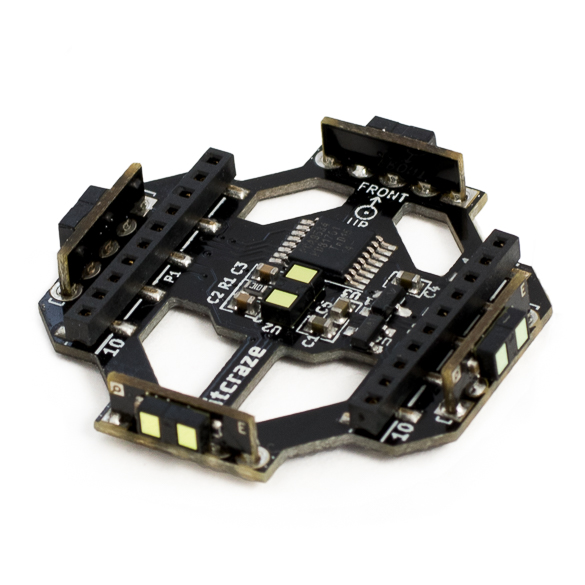
Laser ranging
How it works
The Multi-ranger deck gives the Crazyflie 2.x the ability to detect objects around it. This is done by measuring the distance to objects in the following 5 directions: front/back/left/right/up with mm precision up to 4 meters.
To get the most out of your Multi-ranger it should be paired with a Flow deck V2 , which will measure the movement along the ground and the distance to the ground. It gives the Crazyflie the capability to sense the space around it and could react when something is close and for instance avoid obstacles.
It also allows to start working on environment-aware problems like Simultaneous Localization And Mapping (SLAM) algorithms.
Specifications
Features
- Fast, accurate distance ranging
- Measures absolute range up to 4m in 5 directions
- Eye safe
Mechanical specifications
- Weight: 2.3g
- Size (WxHxD): 35x35x5mm
- Designed for mounting on top of the Crazyflie 2.X
Electrical specification
- 5 x VL53L1x ToF sensor to measure distance up to 4 meters within a few millimeters (depending on surface and light conditions)
- PCA9534 I2C IO expander connected to resets of all
- 1-wire memory for automatic expansion deck detection
Compatibility
Usage
Follow the STEM bundle tutorial to see how to work with the Multi-ranger deck and Flow deck V2 .
Development
Firmware implementation
The Multi-ranger deck is being handled in its driver in the crazyflie firmware.
Examples
Check out the multi-ranger based python demos in the Crazyflie Python Library example folder.
Here is the video of the point cloud example
And here from the push demo (also featured in Usage tab)
Resources
- Start here
- Development overview
- FAQ
- Getting help
- Expansion decks of the Crazyflie 2.x
- Datasheet
- Schematics, deck
- Schematics, daughter board
If you have any further questions please contact support@bitcraze.io